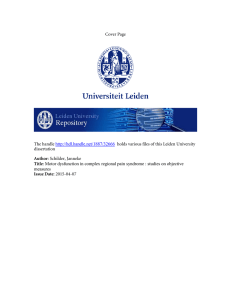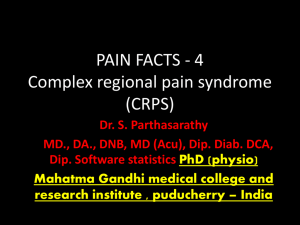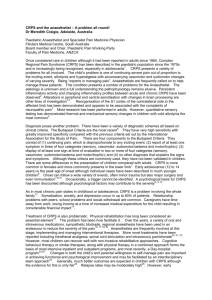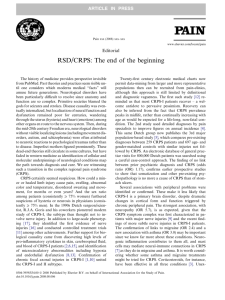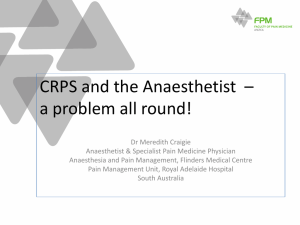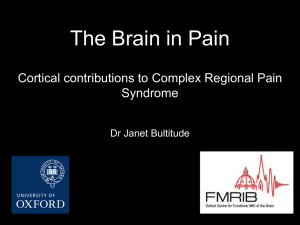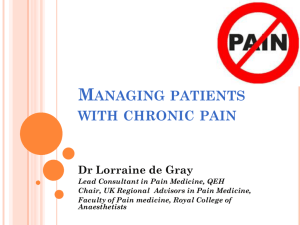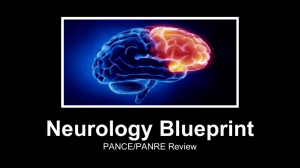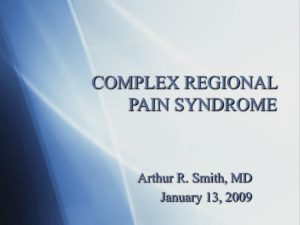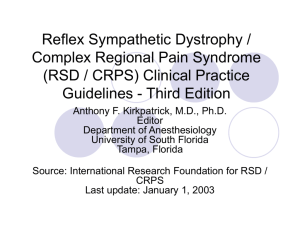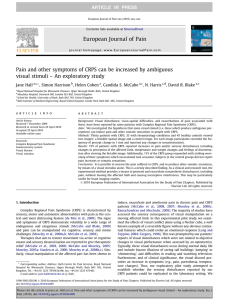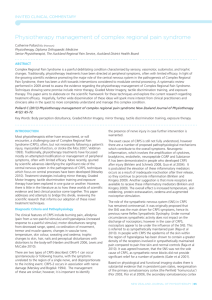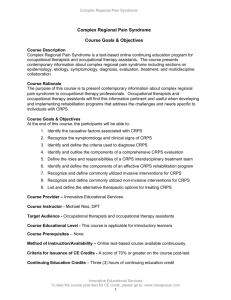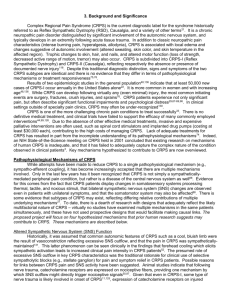Complex regional pain syndrome
advertisement
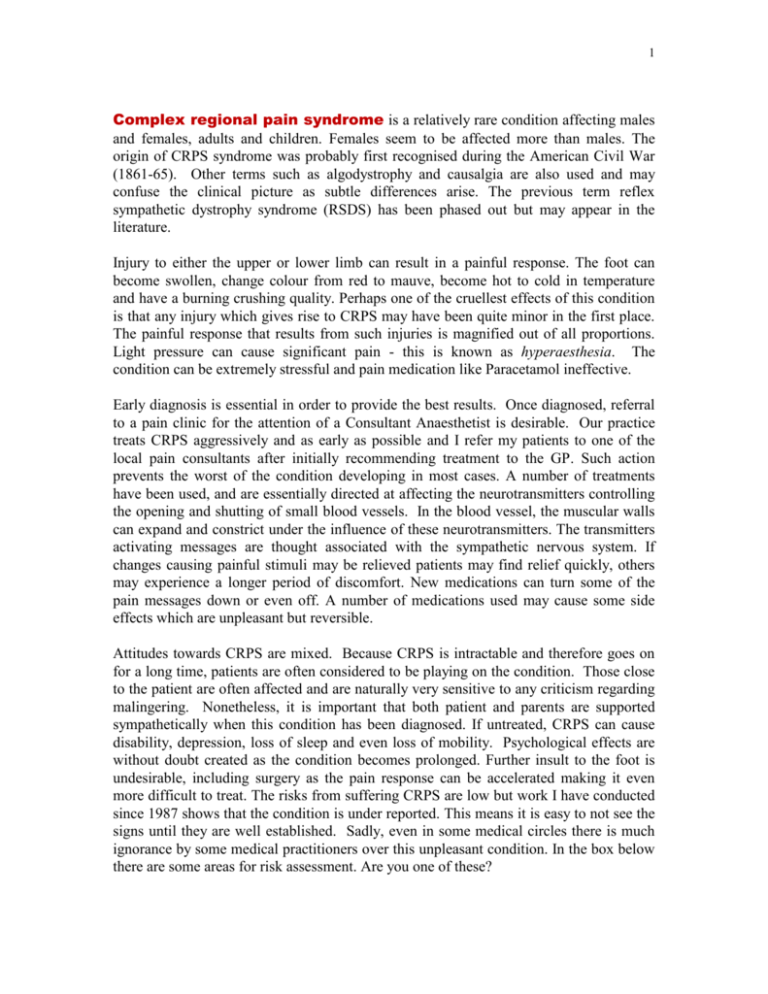
1 Complex regional pain syndrome is a relatively rare condition affecting males and females, adults and children. Females seem to be affected more than males. The origin of CRPS syndrome was probably first recognised during the American Civil War (1861-65). Other terms such as algodystrophy and causalgia are also used and may confuse the clinical picture as subtle differences arise. The previous term reflex sympathetic dystrophy syndrome (RSDS) has been phased out but may appear in the literature. Injury to either the upper or lower limb can result in a painful response. The foot can become swollen, change colour from red to mauve, become hot to cold in temperature and have a burning crushing quality. Perhaps one of the cruellest effects of this condition is that any injury which gives rise to CRPS may have been quite minor in the first place. The painful response that results from such injuries is magnified out of all proportions. Light pressure can cause significant pain - this is known as hyperaesthesia. The condition can be extremely stressful and pain medication like Paracetamol ineffective. Early diagnosis is essential in order to provide the best results. Once diagnosed, referral to a pain clinic for the attention of a Consultant Anaesthetist is desirable. Our practice treats CRPS aggressively and as early as possible and I refer my patients to one of the local pain consultants after initially recommending treatment to the GP. Such action prevents the worst of the condition developing in most cases. A number of treatments have been used, and are essentially directed at affecting the neurotransmitters controlling the opening and shutting of small blood vessels. In the blood vessel, the muscular walls can expand and constrict under the influence of these neurotransmitters. The transmitters activating messages are thought associated with the sympathetic nervous system. If changes causing painful stimuli may be relieved patients may find relief quickly, others may experience a longer period of discomfort. New medications can turn some of the pain messages down or even off. A number of medications used may cause some side effects which are unpleasant but reversible. Attitudes towards CRPS are mixed. Because CRPS is intractable and therefore goes on for a long time, patients are often considered to be playing on the condition. Those close to the patient are often affected and are naturally very sensitive to any criticism regarding malingering. Nonetheless, it is important that both patient and parents are supported sympathetically when this condition has been diagnosed. If untreated, CRPS can cause disability, depression, loss of sleep and even loss of mobility. Psychological effects are without doubt created as the condition becomes prolonged. Further insult to the foot is undesirable, including surgery as the pain response can be accelerated making it even more difficult to treat. The risks from suffering CRPS are low but work I have conducted since 1987 shows that the condition is under reported. This means it is easy to not see the signs until they are well established. Sadly, even in some medical circles there is much ignorance by some medical practitioners over this unpleasant condition. In the box below there are some areas for risk assessment. Are you one of these? 2 The downside is that for some foot pain problems if surgery is not performed there could be a chance that no treatment could still lead to the pain syndrome. We do not have conclusive evidence either way but each case it taken on its own merits Pain is largely different from each person. Some have little pain and others much greater discomfort. We can break down by our clinical evidence. Data from the College of Podiatry (2013) for 12,179 patients shows: Pain of note (lot of discomfort) Moderate pain (some discomfort) Little pain or none Unreported (failed to record their pain levels) 4.9% 52.4% 41.5% 1.2% Risk assessment. Do you fall into any of these categories? Around 1% risk of mild signs often reversible Full blown risk of flare up: 1 in 300 to 1 in 450 chance (0.22 – 0.33%) may not be reversible but helped Risk Slightly higher risk in females (skewed possibly because my practice is largely female) Patients undergoing surgery on or near nerves Commonest in neuroma surgery, tarsal tunnel release and lesser metatarsal osteotomy Very rare in toe and nail surgery 3 Patients with back pain and pathology needing higher levels of pain control Patients with depression Poor support socially i.e separated and divorced (observed but not clinically proven)
